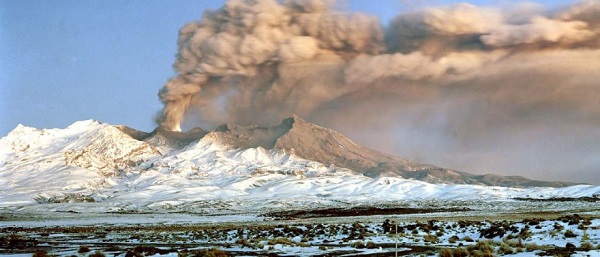Volcanic ash fall is a hazard we should prepare for as there are potential ash sources in several directions around Tauranga with White island, Mount Ruapehu and Mount Tarawera all in the vicinity.
Historically we have had light ash falls roughly once every 10 years or so. Homes and cars were sprinkled with ash in Papamoa from eruptions of White Island in 2012, light ash was deposited over the Tauranga region from the Mt Ruapehu eruptions in 1995-1996, and <5 mm of ash from the 1886 Mt Tarawera eruption.
There is evidence in our soils of larger ash falls too, such as the 1314 AD Kaharoa eruption of Tarawera where 90 and 100 mm of ash was deposited over the wider Tauranga area, and the Oruanui eruption from Taupo (~26,000 year ago) where around 400 mm of ash was deposited.

Mt Ruapehu in eruption (photo: Lloyd Homer, GNS Science)
So how do we know what to expect in the future? And what to be prepared for?
GNS created a probabilistic ash fall hazard map for New Zealand (Hurst & Smith, 2010). The modelling considers elements such as source volcano, wind direction and eruption intensity to model the probability and depth of ash that we may have to deal with.
We could expect up to 1 mm thick of ash from a 500-year event (small to moderate-sized), and up to 100 mm of ash in a larger Kaharoa-sized eruption.
More recent ash fall modelling has been undertaken by GNS and we will review this when it is made available. In the meantime, we commissioned a report to understand how ash fall could impact Tauranga City Council assets, and what we can do to prepare for it (see the report below).
Ash fall Hazard and Impact Review (1.3mb pdf)
Ash effects are more a nuisance than a life-threatening hazard. Nevertheless, our communities could be affected by ashfall through stormwater, water supply, electrical shorting, respiratory problems and traffic hazards related to lack of visibility and traction.
Further information on our volcanoes can be found on the Geonet and GNS websites, as well as advice on how to prepare for volcanic ash fall.